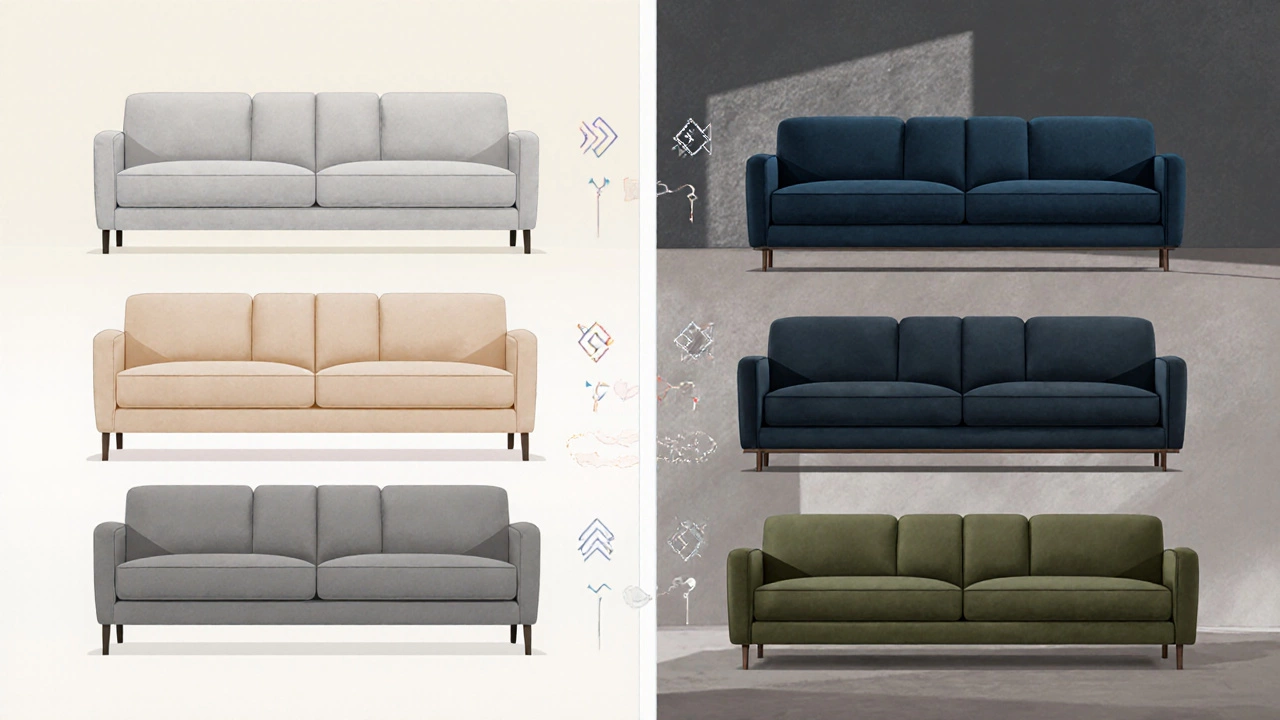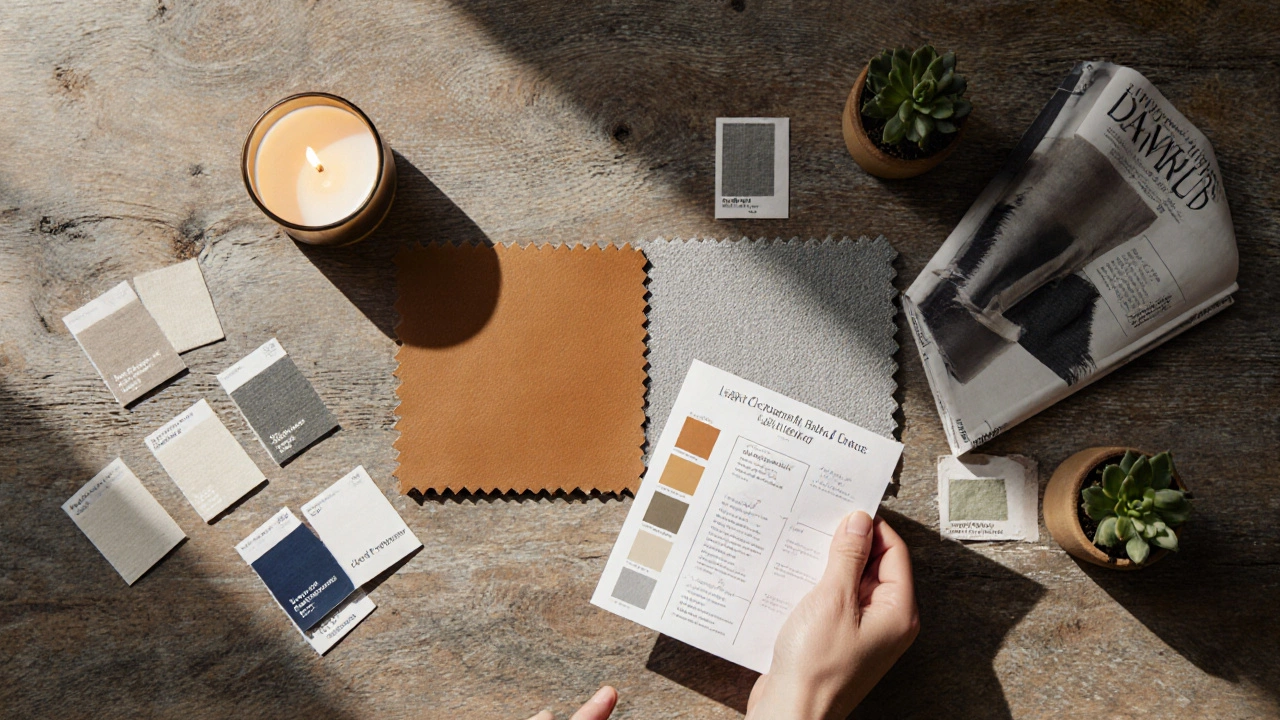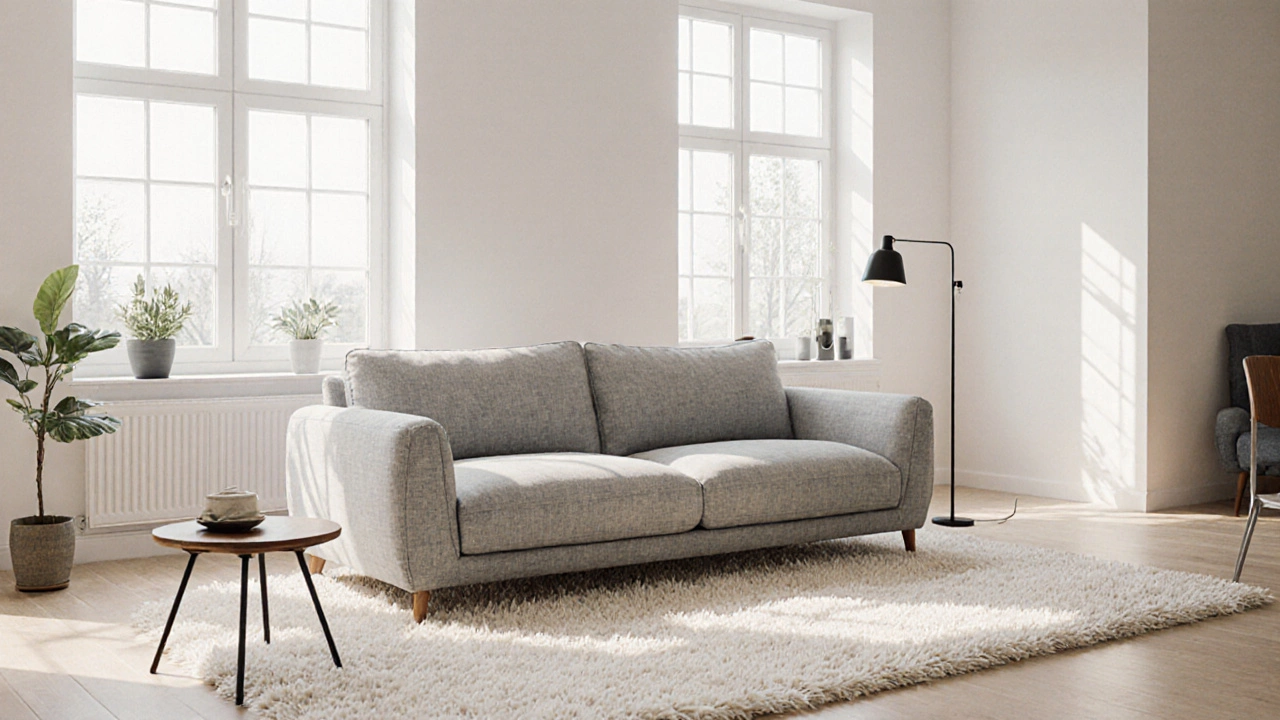Timeless Sofa Color Selector
Find Your Timeless Sofa Color
Answer a few quick questions to get a personalized recommendation for a sofa color that will stay stylish for years.
Picking the right sofa is a big deal-it's the centerpiece of the living room and sets the tone for the whole home. But once you’ve chosen the style and material, the next question is color. Which hue will still feel fresh in five, ten, or even twenty years? In this guide we break down the colors that truly stand the test of time, how they work with different décor, and practical tips to keep your sofa looking great.
Key Takeaways
- Neutral shades like gray, beige, and off‑white are the safest bets for lasting style.
- Deep blues, navy, and muted greens add personality while remaining timeless.
- Material matters: leather ages gracefully, while fabric offers more flexibility.
- Consider room lighting, size, and existing décor before finalising a hue.
- Use the quick decision guide at the end to match color to lifestyle and maintenance preferences.
Timeless sofa color a hue that stays stylish across design trends and complements various décor styles can transform a space without feeling dated. While trends come and go-think mustard yellows or pastel pinks-certain colors keep their appeal because they adapt to changing furniture, wall finishes, and accessories.
What Makes a Color Timeless?
Timelessness isn’t about being boring; it’s about versatility. A truly classic shade works in a minimalist Scandinavian loft, a cozy farmhouse, and a sleek mid‑century modern apartment alike. The secret ingredients are:
- Neutral base: Colors that sit in the middle of the light‑dark spectrum pair well with both warm and cool tones.
- Depth without drama: Slightly muted hues avoid the flashiness that can feel outdated quickly.
- Adaptability to light: The same color can look lighter in a sun‑filled room and richer in a low‑light space, giving flexibility.
Because of these traits, designers keep circling back to a core palette when recommending sofas for clients who want longevity.
Core Neutral Hues
Neutral colors dominate the timeless category. Below are the top three, each with a quick micro‑definition.
Gray A cool, adaptable hue that ranges from light dove to deep charcoal, balancing both warm and cool décor.Gray works especially well with metal accents, wood tones, and vibrant art pieces. Its neutrality lets you change pillows, throws, or wall paint without clashing.
Beige A warm, earthy tone that mimics natural sand, creating a cozy backdrop for both classic and modern styles.Beige sofas pair beautifully with rich wooden frames and soft textiles. The key is to choose a shade that leans slightly toward taupe to avoid yellowing over time.
Off‑White A bright yet softened white that resists the starkness of pure white, offering a clean canvas for accessories.Off‑white works in high‑light rooms where natural daylight highlights its crispness. It also looks fresh alongside dark flooring or colored rugs.

Bold Yet Classic Options
If neutrals feel too bland, consider these deeper hues that still pass the timeless test.
Navy Blue A saturated, deep blue that evokes confidence and pairs well with metallics and natural wood.Navy adds a touch of drama without overwhelming the space. It works particularly well in rooms with white trim or light‑colored floors.
Olive Green A muted, earthy green that recalls foliage, offering a subtle pop of color that blends with warm neutrals.Olive is perfect for homes that lean toward biophilic design-think lots of plants and natural textures. It pairs nicely with cream, tan, and brushed brass.
How Light and Room Size Influence Color Choice
Even the most classic hue can look off if the room’s lighting or dimensions aren’t considered.
- Abundant natural light: Lighter shades like off‑white or light gray keep the space airy.
- Limited natural light: Darker shades such as charcoal gray or navy prevent the room from feeling gloomy by reflecting whatever light is available.
- Large open plans: You can afford a bolder hue because the scale balances the visual weight.
- Cozy, small rooms: Stick to lighter neutrals to make the area feel larger.
Take a quick walk around your living room at different times of day. Notice which parts feel too bright or too dim, and let those observations guide your hue selection.
Material Matters: Leather vs. Fabric
The material you choose can affect how a color ages.
Leather upholstery A durable, natural material that develops a patina over time, often deepening the original hue.Classic leather shades-think caramel, classic black, or deep brown-are already timeless. If you opt for a colored leather, like navy or charcoal, the material’s subtle sheen keeps it looking fresh.
Fabric upholstery A versatile covering available in countless textures and finishes, from linen to velvet.Fabric gives you the freedom to choose any of the colors mentioned above. Consider a performance weave if you have kids or pets, as it resists stains while preserving color vibrancy.

Maintenance, Durability, and Resale Value
Timeless color isn’t just about looks; it’s also about practicality. Here’s what to keep in mind:
- Stain resistance: Darker neutrals like charcoal gray hide everyday spills better than light beige.
- Sun fading: UV‑exposed sofas can fade, especially bright whites. Choose upholstery with UV‑protective coatings if you’ll face strong sunlight.
- Resale appeal: Neutral and deep classic hues attract a wider range of buyers, making it easier to sell or trade‑in your sofa later.
Quick Decision Guide: Choose Your Timeless Shade
| Color | Light/Dark Level | Typical Mood | Best Pairings | Maintenance Note |
|---|---|---|---|---|
| Light Gray | Medium‑Light | Calm, Modern | White walls, black accents, natural wood | Shows lint but hides light stains |
| Charcoal Gray | Dark | Elegant, Sophisticated | Gold metal, deep greens, velvet cushions | Excellent at concealing spills |
| Beige (Taupe) | Medium | Warm, Cozy | Earthy tones, brass lighting, patterned rugs | Prone to yellowing-use low‑VOC finishes |
| Off‑White | Light | Fresh, Minimalist | Bold artwork, dark hardwood floors | Stains visible-consider removable covers |
| Navy Blue | Dark | Confident, Classic | White trim, copper accents, patterned throws | Shows dust; regular vacuuming needed |
| Olive Green | Medium‑Dark | Earthy, Relaxed | Leather accents, terracotta, natural fibers | Fades in direct sun-use UV‑protective fabric |
Match the color to your room’s lighting, the vibe you want, and your lifestyle. If you love change, pick a neutral base and swap pillows and throws for seasonal flair.
Putting It All Together
Remember, the timeless sofa color you select should feel right today and remain appealing years from now. Start by evaluating your existing décor: wall colors, flooring, and accent pieces. Then consider the room’s natural light and size. Finally, decide on material-leather for low‑maintenance elegance or fabric for texture variety. Use the guide above to narrow down to one or two top contenders, order swatches, and live with them for a few days before making the final purchase.
Frequently Asked Questions
Do bright colors ever become timeless?
Bright hues can be timeless if they’re deeply saturated and paired with neutral surroundings. Think of a classic mustard or deep teal used as an accent rather than the primary sofa color. The key is moderation and balance.
How does a sofa’s color affect resale value?
Buyers tend to prefer neutral or classic deep colors because they’re easier to match with existing furniture. A sofa in light gray, beige, or navy usually sells faster and at a higher price than one in a niche pastel.
Can I paint a fabric sofa to change its color?
Yes, specialized fabric paints exist, but the process is labor‑intensive and may affect durability. It’s generally safer to re‑upholster or purchase a slipcover. If you’re set on DIY, test on a hidden area first.
Is leather always the most timeless material?
Leather ages beautifully and stays neutral, but its classic look depends on the shade. A dark brown or black leather feels timeless, while bright or exotic dyed leathers can look dated faster.
How often should I replace my sofa to keep the look fresh?
High‑quality sofas last 7‑10 years. If the color is still in good condition and the frame is sound, you can keep it longer by updating cushions, throws, and accent chairs. A fresh look often comes from accessories rather than a full replacement.
